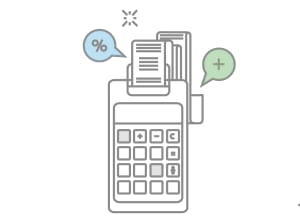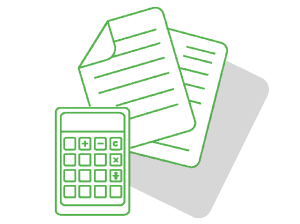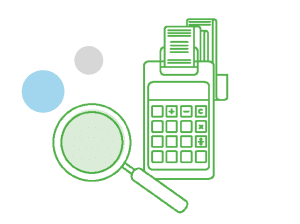From this article, you will learn:
- How the European Union Emissions Trading System works?
- How to record the EUA certificates in accounting books?
- How the property rights to emit greenhouse gases are valued?
For the sake of the environment, the European Union sets limits for carbon dioxide emission. The international community controls this process while requiring from European enterprises to present the certificates of European Union Allowance (EUA), which are the property rights to greenhouse gases emission for every CO2 ton they emit to the atmosphere. Since EUA are an instrument of the European Union Emissions Trading System, better known as EU ETS, accountants and entrepreneurs should remember to properly record them in the accounting books and present them in the financial statement.
One EUA entitles the certificate holder to emit 1 ton of carbon dioxide into the atmosphere.
The EU ETS system is based on the so-called "Cap & Trade" principle, i.e. on limits set in advance for each entity to emit specific harmful substances into the atmosphere in a given calendar year. In its assumption, it should lead to the systematic reduction in harmful substances emission within the EU, until zero-emission in the European energy sector and industry is achieved. Therefore, over time, the community systematically lowers the emission limits. By 2030, harmful gas emission is to be reduced by 40%. Zero-emission is planned to be achieved in 2050.
Accounting the trade of carbon dioxide emissions certificates – what do the provisions say?
According to the resolution of the Accounting Standards Committee of December 8, 2015, both granted and acquired rights to emit harmful substances fulfill the definition of intangible assets (Article 3 paragraph 1 section 14 of the Accounting Act).
Inclusion of EUA in entity’s accounting records occurs on the date of certificate acquisition (also granting), at cost price. In the financial statement (balance sheet) these certificates should be listed in a separate position (in the group of intangible assets) no matter if they were acquired for own needs or for sale.
The moment of acquisition is the day of transfer of emission rights into the ETS account (it is a special account in the EU registry, which all enterprises participating in the EU ETS system must have opened). According to Article 28 paragraph 2 of the Accounting Act, the cost price of the granted right equals the product of the number of granted rights and the unit selling price of the granted emission right.
Learn more about related services
The method of accounting acquisition and using the rights to greenhouse gases emission
The European Union also grants the EU ETS system participants free certificates. They are granted every year to particular countries (the primary beneficiary is Poland) and industrial sectors. Entities receiving those EUAs can use them to emit specific gases into the atmosphere without incurring additional costs… or they can sell them on the market.
Granted emission rights should be recorded in accounts in accordance with Article 41 paragraph 2 of the Accounting Act:
Dr „Intangible assets” / Cr „Deferred income”
According to the rules of the European Union Emissions Trading System, every year, all enterprises participating in the EU ETS system must write off the rights corresponding to the amount of CO2 emitted in the previous year. For this purpose, according to the Act on Emissions Trading, by 30 April of the following year they submit a report summarizing the amount of the harmful gases emission to The National Centre for Emissions Management (KOBIZE).
At the moment of using up (or selling) freely granted emission rights, in the accounting books the deferred income settlement should occur through accounting it on the other operating income, alongside depreciation or impairment expenses:
Dr „Deferred income” / Cr „Other operating income”
Dr „Depreciation” / Cr „Write-off of intangible assets”
If an entity has acquired the certificates at various prices they adopt one of the following methods laid down in Article 34 paragraph 4 section 1–3 of the Accounting Act while conducting a depreciation valuation:
- average cost method, based on the weighted average of emission right prices,
- First In, First Out method (FIFO),
- Last In, First Out method (LIFO).
Potential write-off due to permanent emission rights impairment, made in accordance with Article 28 paragraph 7 of the Accounting Act relates to other operating costs of the period when the circumstances that justify making this write-off occurred.
Sale of EUA certificates
Unused greenhouse emission rights can be traded. The sales outcome charges other income or operating costs within the period when the transaction was completed.
The book value of sales is determined similarly as in the case of using the certificates. Recordkeeping in the books looks as follows:
Dr „Deferred income settlement”
Cr „Other operating income”
Dr „Other operating costs”
Cr „Intangible assets”
The emission rights that an entity is going to sell, are recorded in the accounts and listed in the financial statement (balance sheet) together with the emission rights intended for own needs. However, in the notes of the financial statement it should be pointed out which emission rights are intended for sale. They are recorded at market value or at cost price, depending on which of them is lower.
Reporting EUA and the role of accounting department
Entrepreneurs often do not realize to what extent Polish and EU regulations regarding emissions while conducting business activity concern them. After all, for the entity to be considered as a CO2 emitter by the EU, they do not have to be a big energy company. Emission rights trading, provided that it is properly recorded in the books can bring measurable benefits. An experienced accountant and accounting office that is familiar with servicing enterprises from various industries and knows international regulations can not only improve the process of reporting emissions, but also help with financial decision making. If you are interested in the professional outsourced accounting services, you are welcome to contact us.





